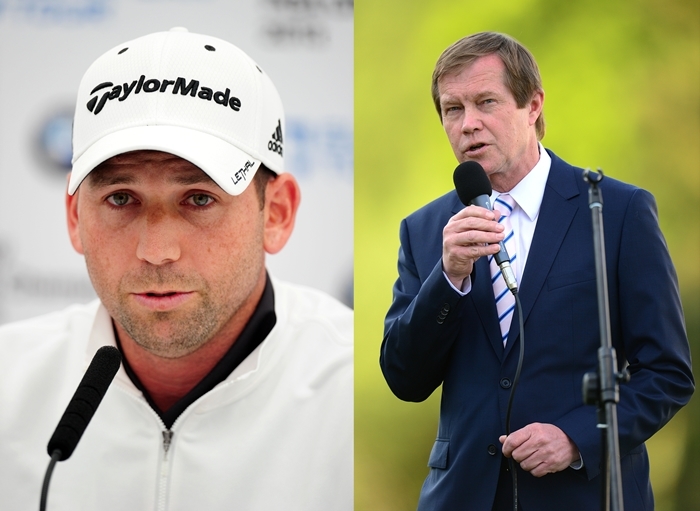Just making a bad joke about fried chicken and using the word “coloured” does not make Sergio Garcia nor George O’Grady racists. They were, however, at best clumsy use of the language.
We can debate whether Europeans should be beholden to another country and culture’s vernacular when talking about race. Others can rant about what is “politically correct”, which most of the time to me seems a euphemism for politeness rather than some sinister threat to our freedom of expression.
What Sergio said last week was totally inappropriate and George’s response disastrously worsened the situation.
Neither man is racist, but you’ll have a tougher job saying that golf isn’t.
You look about the world of golf and the colour is overwhelmingly white. Everywhere. In the UK and Europe, in America and in South Africa, even in developing markets of Dubai and China.
There are just a handful of players of an ethnic origin other than Caucasian or South-East Asian on the world’s major tours. The only major winners who come from outside these race-groups are Tiger Woods and Vijay Singh (Michael Campbell, the New Zealander who won the 2005 US Open, does not consider himself to be black, or even Maori).
Woods’ arrival 18 years ago was cataclysmic for golf the first black man who was the best at the game and didn’t have artificial barriers placed in his way. Many people said his arrival would change golf for good.
He’s changed golf in a lot of ways, but the attitude to race is clearly not among them. He’s been like Margaret Thatcher was for women in British politics a supposed trailblazer not the least bit interested in lighting the touchpaper.
His Foundation, at least partly set up to diversify the game’s appeal in other communities, has yet to produce even a single player of note. There’s been no other African-American golfers reaching the PGA Tour in his wake.
In Britain we’re hardly any better. In 20 years of covering golf at junior level through to senior, I can think of only one, even native mixed-race player who has come through to play in the Open; Zane Scotland, now flitting between the Challenge Tour and EuroPro Tour.
The sizeable British black community has made disproportionately significant contributions to soccer and rugby. The Asian subcontinent community has been the same in cricket. Neither has made a dent in golf, however.
Is golf in Britain putting up barriers to stop boys and girls from these communities playing the game? Not visibly. Every youth scheme, from Scotland’s clubgolf through the Golf Foundation and all those abroad, makes a point of inclusivity. Any organisation that discriminated on grounds of race would quite rightly be subject to prosecution under the law.
What’s the problem then?
It’s two-fold. The first issue is economic, and we can see it quite clearly in the list of major winners.
The only player to win a major in the last 30 years who did not originate from the middle-class, country club or golf club scene where even Woods, Singh, Severiano Ballesteros and Jose Maria Olazabal all emerged – is Angel Cabrera of Argentina, who started out as a penniless 10-year-old caddie in Cordoba.
Golf is expensive and there are still simply not enough opportunities for people from disadvantaged communities to compete. As we know well, the economic divisions in our society are often also racial divisions.
The other issue is cultural. You’d expect some from the sometimes economically prosperous Asian sub-continent community to have come into golf, and there have been signs of that happening. But it’s been a slowish process, given that community’s clear preference for cricket.
This is only “casual” racism, but it’s still significant. The only thing that can be done is to make golf and the facilities to play it as open as possible for everyone.
Which was the Scottish tradition when the game started out, after all.
